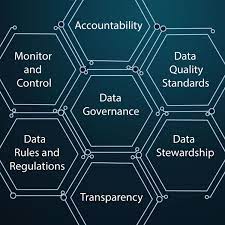In today's data-driven world, organizations are sitting on a treasure trove of information. Data, when harnessed correctly, can be a strategic asset that drives growth, innovation, and competitive advantage. However, this wealth of data also comes with responsibilities - the need to manage, protect, and utilize it effectively. This is where effective data governance enters the picture.
Data governance is not just a buzzword; it's a critical framework that ensures data is treated as a valuable asset, much like physical assets such as real estate or equipment. Effective data governance lays the foundation for data quality, compliance, and trustworthiness. In this article, we'll explore the key principles that underpin successful data governance initiatives.
Principle 1: Define Clear Objectives and GoalsThe first step in establishing effective data governance is to define clear objectives and goals. What does your organization aim to achieve with data governance? Is it improving data quality, ensuring compliance with regulations, or enhancing decision-making through data-driven insights? Setting specific, measurable, and achievable goals will provide a roadmap for your data governance program.
Principle 2: Establish Data Ownership and AccountabilityData governance requires clear ownership and accountability. Assign responsibility for data assets to individuals or teams within the organization. Data owners are responsible for data quality, security, and compliance. This accountability ensures that someone is answerable for the data's integrity and appropriate use.
Principle 3: Develop Data Governance Policies and StandardsData governance policies and standards are the rules that govern how data is collected, stored, processed, and shared. Develop a comprehensive set of policies that address data privacy, security, retention, and usage. These policies should align with industry regulations and best practices.
Principle 4: Data Quality and Metadata ManagementHigh-quality data is at the core of effective data governance. Establish data quality standards and implement data profiling and cleansing processes to ensure data accuracy, completeness, and consistency. Metadata management, which involves documenting data definitions, lineage, and usage, is equally crucial for understanding and controlling data assets.
Principle 5: Data Security and PrivacyData security and privacy are paramount in today's digital landscape. Implement robust security measures to protect data from unauthorized access and breaches. Comply with data privacy regulations, such as GDPR or CCPA, by defining and enforcing data protection policies.
Principle 6: Data Lifecycle ManagementData governance should encompass the entire data lifecycle, from creation to archival or disposal. Define processes for data capture, storage, retrieval, and retirement. Implement data archiving and deletion policies to manage data in a compliant and efficient manner.
Principle 7: Data Governance Framework and Governance BoardEstablish a formal data governance framework that outlines the organizational structure, roles, and responsibilities. Create a data governance board or committee composed of key stakeholders to oversee and drive the data governance program. This board should have the authority to make decisions and resolve data-related issues.
Principle 8: Communication and TrainingEffective communication is vital to the success of data governance. Regularly communicate the importance of data governance to all employees and stakeholders. Provide training and resources to ensure that everyone understands their roles and responsibilities in maintaining data integrity.
Principle 9: Monitoring and Continuous ImprovementData governance is an ongoing process. Implement monitoring and auditing mechanisms to track adherence to policies and standards. Regularly assess the effectiveness of your data governance program and make improvements as needed.
Principle 10: Alignment with Business StrategyFinally, ensure that your data governance efforts align with your organization's overall business strategy. Data governance should support the achievement of business goals and contribute to better decision-making and innovation.
In conclusion, effective data governance is not a one-size-fits-all solution but a tailored framework that aligns with your organization's specific needs and objectives. By following these key principles, you can establish a solid foundation for data governance that enhances data quality, compliance, and trust, ultimately driving business success in the data-driven age.






